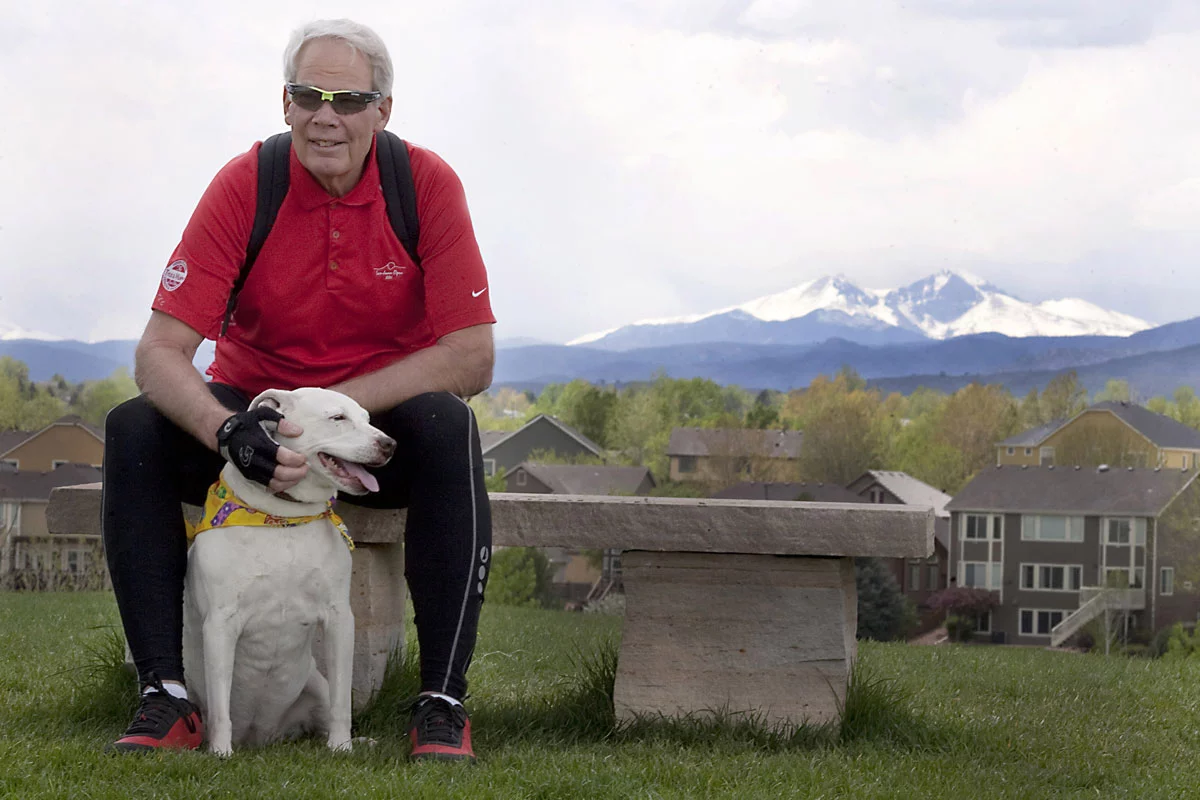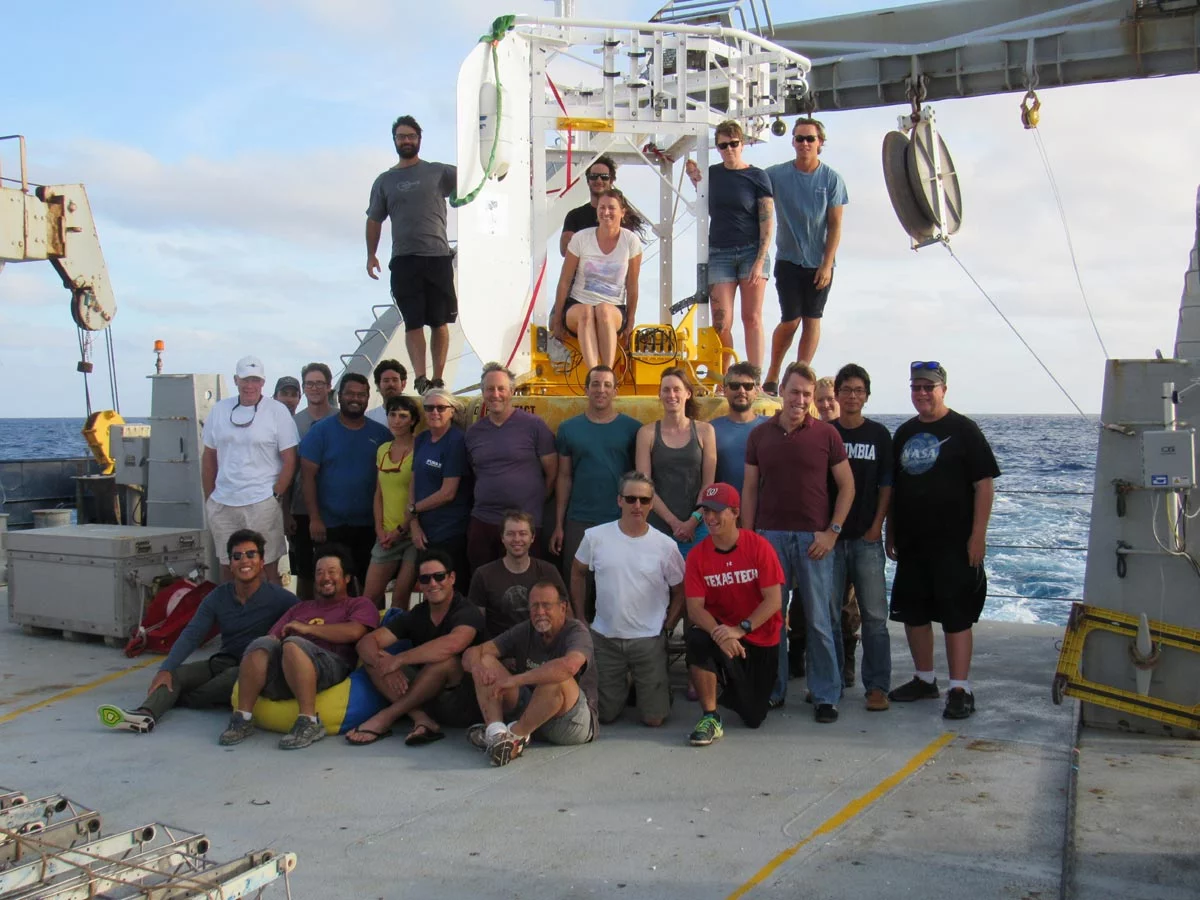Dr. Steven Rutledge enjoys the excitement and adventure that comes with being an atmospheric scientist. He travels the world studying storm systems and sharing data with other researchers, as well as with his graduate students at Colorado State University.
“It’s pretty fascinating work and it keeps me really busy,” Rutledge said.
In his spare time, he takes to the road with his bicycle, covering 100 miles or more a week. And, every day, he walks his almost 14-year-old pit bull lab mix companion, “Saffy.”
The otherwise healthy Rutledge was surprised to learn he was diagnosed with an abnormal heartbeat. It didn’t need addressing right way, but eventually it started to interfere with how he lived his life. After research and guidance from his doctors, Rutledge decided it was time to do something about it.

Finding atrial fibrillation
Atrial fibrillation (AFib) is a quivering or irregular heartbeat. About 2.7 million Americans live with AFib, according to the American Heart Association. An atrial flutter, or a faster-than-normal heartbeat, is closely related. Rutledge, now 65, had both.
“It didn’t affect my performance,” Rutledge said. “I was able to walk miles, ride miles on my bike and exercise nearly at full capacity.”

What worried Rutledge, however, was taking long trips that sometimes left him hours or days away from medical care. People with AFib have five times the risk of stroke than those without the condition. What if something happened to him while he was away?
Episodes of atrial fibrillation
“Symptoms of AFib aren’t always clear-cut,” said Dr. Russell Heath, a clinical cardiac electrophysiologist with UCHealth Heart and Vascular Center in northern Colorado.
Often with abnormal heart rhythm, people just don’t feel well. They may experience dizziness, weakness or shortness of breath. Sometimes the fluttering or thumping in the chest is noticed, or a rapid or irregular heartbeat.
In some cases, the heart experiences abnormal rhythm for long periods of time. In others, like Rutledge’s, the heart returns to a normal rhythm on its own in a few days. But in the vast majority of cases, AFib is progressive and becomes more frequent over time, Heath said.
“It would happen for a few hours where I’d have this irregular heartbeat. It may continue for a few days and then be gone for a week to maybe a few months,” Rutledge said.
In 2017, while on a research project at sea, Rutledge went six weeks without an abnormal heart rhythm. It was the longest timeframe in the past several years he had not experienced an abnormal rhythm.
“Dr. Heath joked that we’d found a solution — just stay at sea,” Rutledge said. “That would be a lot of fun, but not sure if I could do that.”
Between sea voyages, Rutledge is fully engaged in teaching graduate courses at CSU and traveling for speaking engagements on climate change and other weather-related topics. His abnormal heart rhythm was causing him some stress.

Living with an abnormal heart rhythm
Rutledge’s primary care physician had been monitoring his atrial fibrillation over the years, and Rutledge had been seeing Heath since 2016.
“When I met Dr. Heath, he explained that I could get on medication to reduce or eliminate AFib, or we could do an ablation,” he said.
AFib ablation is a procedure that works by scarring or damaging tissue in the heart to disrupt the faulty electrical signals causing the arrhythmia.
“I was not at that point yet.” Rutledge said. “I said we should first try the drug.”
But drug treatment was ineffective for him.
A long excursion
In the summer of 2018, Rutledge was getting ready for a long research cruise in the western Pacific. He had a regular wellness exam set with his primary care doctor, as well as a regular checkup with Heath.

Rutledge was in an abnormal heart rhythm for both visits — he’d had enough. Rutledge began to conduct more research on AFib and the ablation procedure.
“I like the science of it,” he said. “Maybe I over analyzed it and studied it too much, but that’s my nature.”
He decided not to go on the research excursion, and opted to participate remotely with his team.
“I had to put my health in front of my work at that time, and I’m better off for doing that,” Rutledge said.
He scheduled an ablation procedure for Aug. 10, 2018.
“Most of what we do for AFib, outside of those who have heart failure, is a quality-of-life measure,” Heath explained. “In most cases, AFib is not shortening their life, but it is making them feel bad and that’s what we are treating.”
AFib ablation procedure
When electrophysiologists like Heath do an ablation, they’re intentionally creating scar tissue in the heart.
“We are affecting the electrical conduction in the heart, creating just enough scar tissue to affect that connection,” Health said.
How much tissue do they damage? “If all the muscles of the heart fill a bucket, even with a large ablation, we are affecting just a few drops in that bucket,” he said.
Currently in northern Colorado, ablation is offered at UCHealth Heart and Vascular Center at UCHealth Medical Center of the Rockies in Loveland. In 2019, UCHealth Poudre Valley Hospital will open its expanded cardiac catheterization lab, and the same cardiologists who treated Rutledge will be able to offer this procedure there, as well as several other services addressing heart attacks and prevention.
A love for science
In a way, Rutledge’s procedure was a mini science experiment for him.
“The lab they have at MCR is super cool and the technology — being a scientist and all — was fascinating,” he said, joking that his cardiologists were probably a bit annoyed with all his scientific questions.
Poudre Valley Hospital will have the same technology and state-of-the-art lab that is in place at Medical Center of the Rockies (MCR), Heath said.
Although the technology hasn’t changed much in the past decade, Heath said, the techniques in electrophysiology have.
“This is cutting-edge for what we do for AFib,” he said.
Rutledge said he appreciated the vast training and experience of Heath and his colleagues.
“They’re a top-notch group, and I did my research and knew it was important to go to a high-volume center to get this done,” Rutledge said. “The electrophysiologists are all young and they’ve learned the new stuff. That resonated with me.”
The American Heart Association recommends patients look to centers that have performed at least 50 ablation procedures annually as high-volume centers have better outcomes. In 2018, the UCHealth heart and vascular team in northern Colorado performed more than 650. That sheer number is one reason for expanding capabilities at Poudre Valley Hospital.

Same team, another location
Currently, UCHealth cardiologists who practice in northern Colorado are performing mostly inpatient pacemaker procedures at Poudre Valley Hospital. In addition to ablations, the expansion will allow for the PVH lab to offer other electrophysiology treatments, like defibrillators and the newer “leadless” pacemaker devices, for outpatients as well, Heath said. It also will increase capacity for procedures already offered, like stenting and angioplasty.
Freed from AFib
“I’d do it all over the same way,” Rutledge said as he walked Saffy in his neighborhood park in Fort Collins recently. “I’d do the testing, give it time, and then approach it with ablation.”
Rutledge was released from the hospital the day after his procedure. He said he felt tired for a few more days but about a week later, he was able to get out again with Saffy. Two weeks later, he was back to 100 miles a week on his bicycle.
He’s also back to traveling for work, without much concern.
There is always the possibility that AFib may return after treatment, Heath said. But Rutledge said he’s been free of any abnormal heart rhythm since his procedure.
“I’ve had no problems at all,” he said. “I had very positive results because of an experienced and caring team of cardiologists and nurses at UCHealth.”
